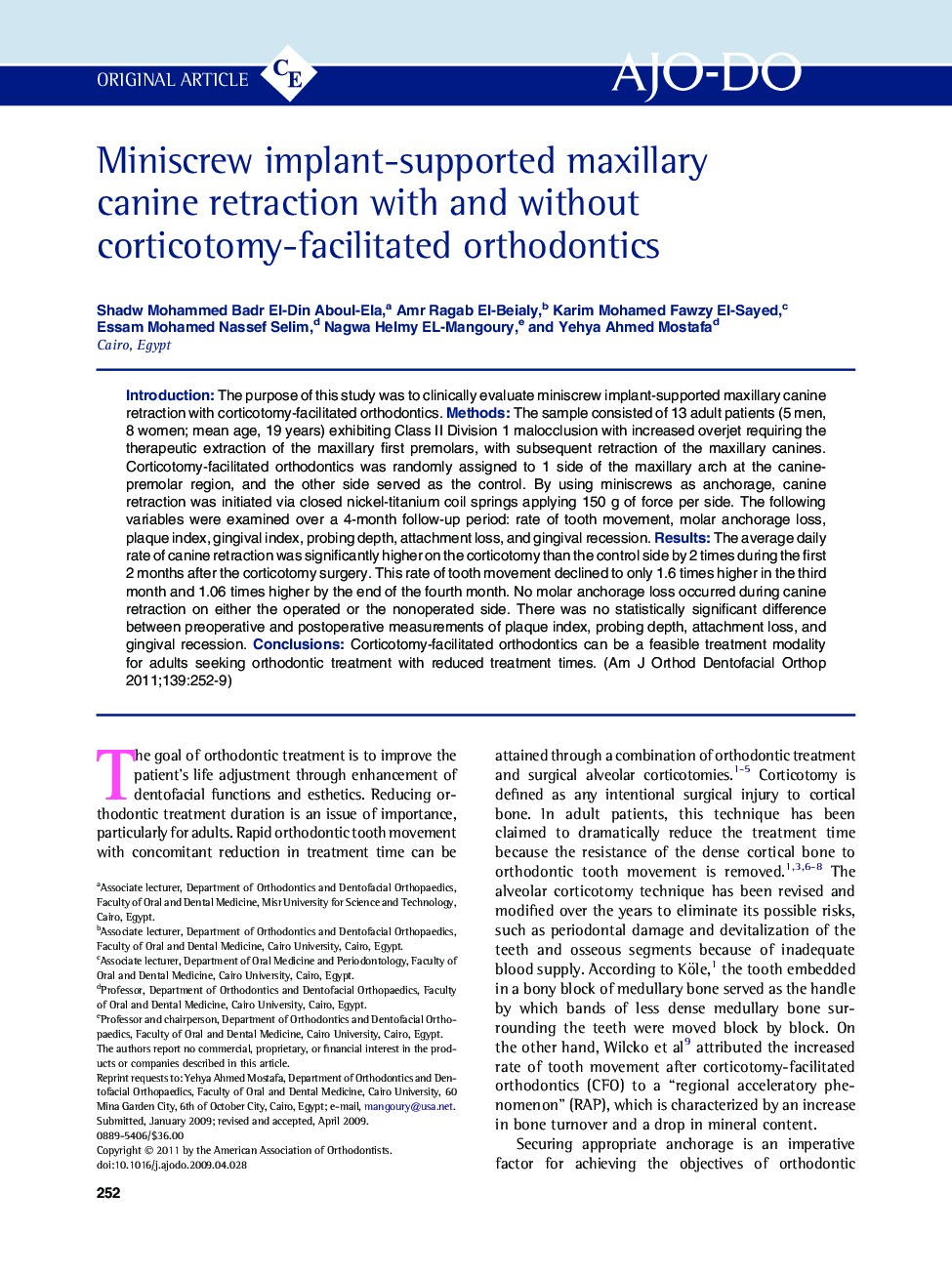| Article ID | Journal | Published Year | Pages | File Type |
|---|---|---|---|---|
| 3117809 | American Journal of Orthodontics and Dentofacial Orthopedics | 2011 | 8 Pages |
IntroductionThe purpose of this study was to clinically evaluate miniscrew implant-supported maxillary canine retraction with corticotomy-facilitated orthodontics.MethodsThe sample consisted of 13 adult patients (5 men, 8 women; mean age, 19 years) exhibiting Class II Division 1 malocclusion with increased overjet requiring the therapeutic extraction of the maxillary first premolars, with subsequent retraction of the maxillary canines. Corticotomy-facilitated orthodontics was randomly assigned to 1 side of the maxillary arch at the canine-premolar region, and the other side served as the control. By using miniscrews as anchorage, canine retraction was initiated via closed nickel-titanium coil springs applying 150 g of force per side. The following variables were examined over a 4-month follow-up period: rate of tooth movement, molar anchorage loss, plaque index, gingival index, probing depth, attachment loss, and gingival recession.ResultsThe average daily rate of canine retraction was significantly higher on the corticotomy than the control side by 2 times during the first 2 months after the corticotomy surgery. This rate of tooth movement declined to only 1.6 times higher in the third month and 1.06 times higher by the end of the fourth month. No molar anchorage loss occurred during canine retraction on either the operated or the nonoperated side. There was no statistically significant difference between preoperative and postoperative measurements of plaque index, probing depth, attachment loss, and gingival recession.ConclusionsCorticotomy-facilitated orthodontics can be a feasible treatment modality for adults seeking orthodontic treatment with reduced treatment times.
